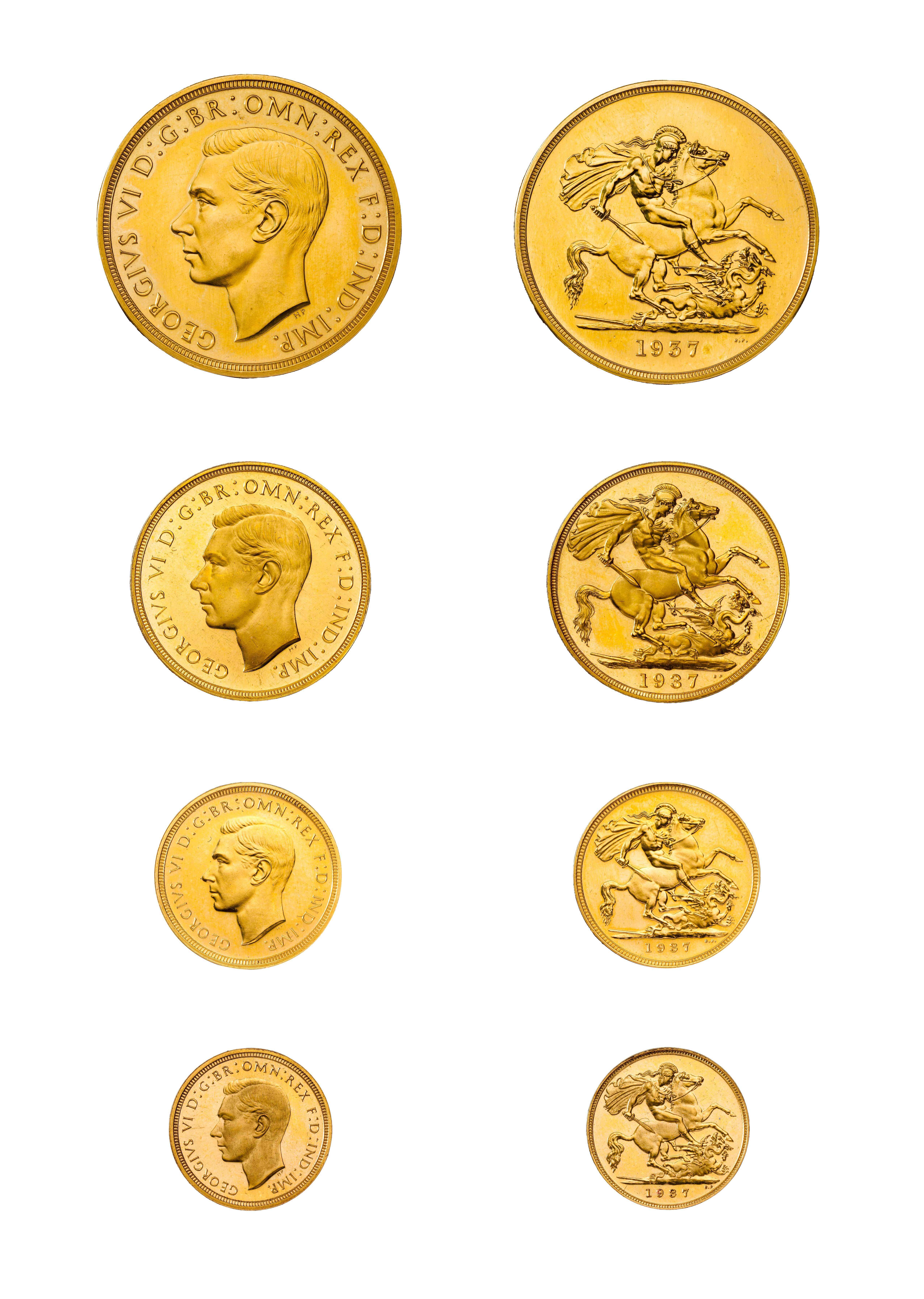The Wilderness Years
The abdication of Edward VIII in December 1936 was a constitutional crisis for the British state. There was a desire that his brother should be crowned king as soon as possible in order to ensure a return to normality. Rather than host a design competition, as would be normal, The Royal Mint commissioned Humphrey Paget alone to prepare the uncrowned effigy urgently required for the coins and medals of George VI. In a little more than a month, he produced the classic coinage head of the twentieth century. Simple, unaffected and well balanced, it was near perfect from a technical point of view and typifies Paget’s work more than any other of his designs – it is also almost certainly the design he regarded as his best.

George VI sovereign family. Quintuple sovereign (RMM1371), double sovereign (RMM1377), sovereign (RMM1379), half-sovereign (RMM1386)
By the time of the coronation in 1937, the production of sovereigns in the UK and all overseas branches had ceased but a proof sovereign set marked the start of the new king’s reign. Unlike sovereigns struck for circulation, these 1937 coins have a plain rather than milled edge and are the only sovereigns to bear the portrait of George VI. Due to their plain edge, the coins are technically not legally tender, as they do not match the specifications laid down in the Royal Proclamation.
Did You Know?
Intended for use by the armed forces overseas in the event of conflict, sovereigns struck in 1949, 1951 and 1952 towards the end of George VI’s reign bore the familiar portrait of George V and were dated 1925 to ensure they would be acceptable in an emergency.

